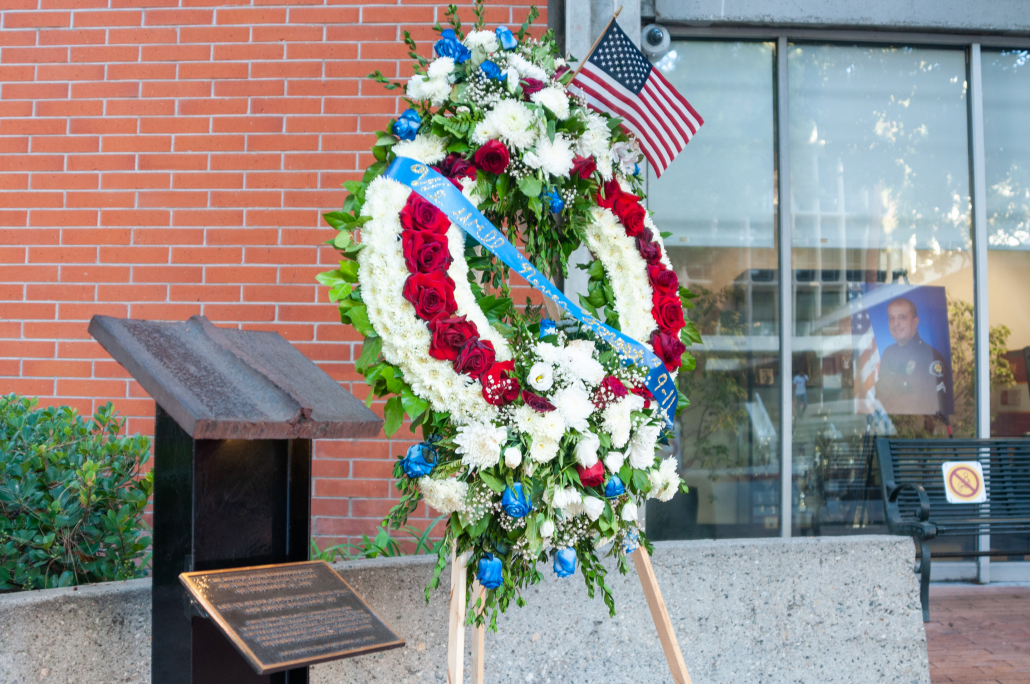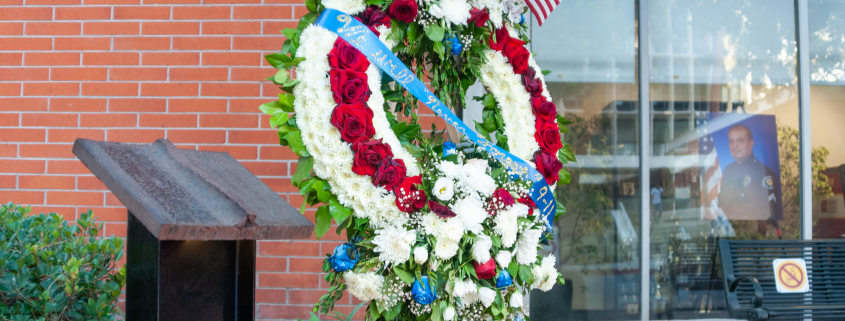Students and staff members reflect on the 20-year anniversary of 9/11

Before she was an adjunct assistant professor at the School of Social Work, Laura Owen served as a military mental health officer in San Antonio, Texas.
Up until 9/11, Owen’s day-to-day life serving in the military was relatively similar to her previous job as a civilian social worker. That all changed the morning members of al-Qaeda attacked the World Trade Center.
“When the events at the Twin Towers happened … I was working in [Wilford Hall Medical Facility],” said Owen in an interview with the Daily Trojan. “There was a TV on with the news in the background. I remember seeing the towers go down … and I thought, ‘Oh, this is some Hollywood movie.’”
Because Owen was at work when she learned the news of the attack, she says wasn’t able to mourn the casualties like a normal citizen.
“Being in a military environment, when your country is attacked, is otherworldly,” Owen said. “I felt the sting of the attack as an American, as a world citizen, but the response required of me was different because I was a military officer.”
After watching the footage of the mass casualties, Owen left the room to cry in private because, she said, at the time, the military “highly discouraged” officers from showing “excessive emotion” while in uniform. To her surprise, after she composed herself, she walked back out to find the other officers crying in public.
“That was my first tip off that [it] was not going to be a regular day,” she said.
Meanwhile, in Soho, professor Keith Mayerson was getting ready to teach his freshman drawing class at New York University when he heard the first plane fly overhead. According to Mayerson, by the time he and his husband went out onto the street, there was a big hole in the World Trade Center, and, from where they were standing, they could make out the people inside of the towers.
“It was the second week of NYU. I had to go to my freshman drawing class. I told the kids, ‘Look, you know, I don’t know what else to do. Art isn’t necessarily therapy, but maybe we should just go out and draw this thing,” said Mayerson, who currently serves as chair of 2D Art at the Roski School of Art and Design. “We went to Washington Square Park, and they brought up their sketchbooks, and, just at that moment, the first tower fell. The adults in the park were screaming and crying. My kids were terrific — they were embracing the adults and telling them it would be okay, and I said, ‘OK, class obviously is canceled, please go home and call your parents and tell them you’re OK.’ But that’s what happened that fateful day, and none of us would ever forget it.”
Hours away in San Antonio, Owen awaited clearance from the Transportation Security Administration to fly to New York to act as a mental health first responder for “female rescue and recovery workers who were first tasked with finding anybody who was still alive in the wreckage.”
“My job was to make sure that the rescue and recovery workers who were tasked with sorting through the rubble were able to, at the end of the day, release all of the stress and then go back the next day to do the same thing,” Owen said.
During the two weeks she spent serving in New York, Owen said she also worked with canine handlers and their dogs to help them navigate the transition from rescuing live people to recovering dead bodies.
Within weeks of returning to Texas, Owen became one of the first officers deployed to a mobile medical unit in Oman.
“Having joined during peacetime, as a social worker, as an officer, it never occurred to me that I would actually ever go to war — that I would ever see violence or aggression,” Owen said. “I joined at a time when America was considered the only superpower and alone in its strength as the world’s preeminent military power. It never occurred to me that anyone would dare attack our country.”
Although Owen never expected to find herself at war overseas, she said she’s proud of the work she did during her deployment.
“Most of the people I deployed with were hurt and angry that our country had been attacked,” Owen said. “I wasn’t there just to make sure that people’s feelings were OK. I was making sure that people were able to do their jobs in an ethical way … I was there to make sure that, when we go after the bad guy, we’re only going after the bad guy — not going after civilians. That is certainly not always the case, but it was my job to make sure that angry people didn’t carry guns, that angry people didn’t fly planes, that people were psychologically sound to do their jobs.”
For Mayerson, it would take many years to fully confront the tragedies he’d witnessed the morning of the attack.
After 9/11, Mayerson depicted the events through allegories to “talk about reality but from a distance.” Some of the paintings throughout these years featured fictional characters like Spider Man, King Kong and Jimmy Stewart at the World Trade Center. However, after nearly a decade, Mayerson still had nightmares of people falling from the towers.
Following his father’s advice, Mayerson started making paintings of the actual events almost seven years later.
“It was really hard painting. I would break down in tears … but, when I was finished, I felt really edified. It was very cathartic,” he explained. “So, ‘edifying’ is a good word for me because I wasn’t happy, but it made a difference in my life.”
Although she grew up hearing stories like those of Mayerson and Owen, Chantal Corona wasn’t alive before 9/11.
“[9/11’s] significance to me? I don’t think there is much, just because, I mean, I wasn’t born yet. I didn’t really understand what was going on at the time,” said Corona, a freshman studying health and the human sciences.
Hayden Rivas, a sophomore majoring in dance, expressed a similar sentiment.
“You know, I grew up in Canada, so the implications were kind of different … I’m glad to acknowledge it within the states, but it’s just something that I don’t actively think about all the time.”
To Owen, meeting and teaching students who are too young to remember the attack is bittersweet.
“It’s heartbreaking and hopeful at the same time to teach students who didn’t know a world before 9/11,” Owen said. “So much of what my generation went through, fought for, defended and also got wrong is the precursor to what my younger students experience.”
Owen believes that, because of 9/11, the new generation of students grew up to be more skeptical of people in power and more motivated to be politically involved.
“I see, every day in my classroom, the evolution of ideals. My students are smarter and better than I was at their age. They’re asking harder questions than I asked; they’re including more people than I thought to include; they’re challenging the status quo in a way that I don’t think I knew to challenge [it]. I think all of that happens, because they’re building on as far as my generation could go,” she added. “That makes me feel tremendously hopeful.”

